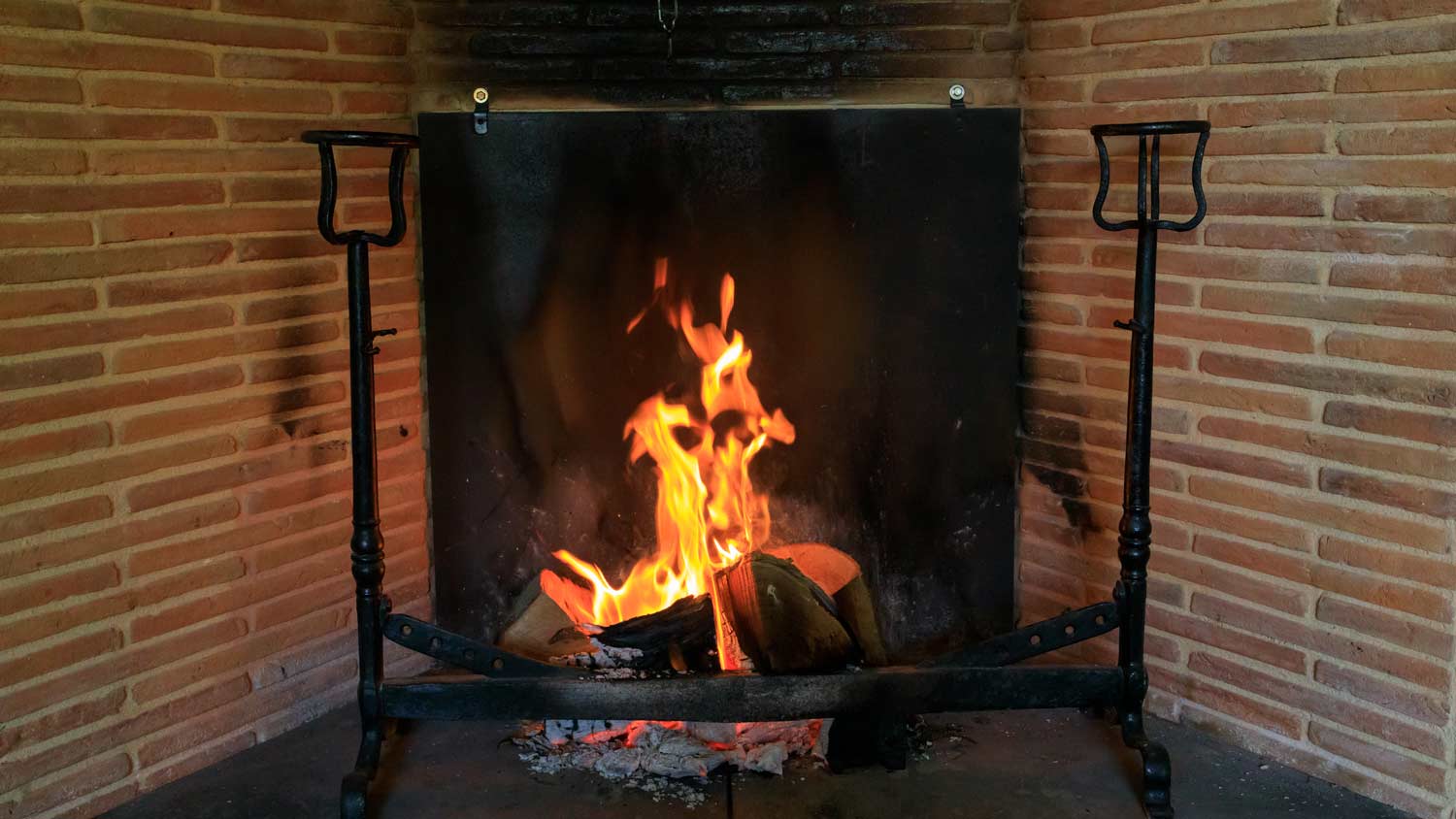7 Types of Wood-Burning Fireplaces to Light Up Your Space
Warm up to all the heating possibilities
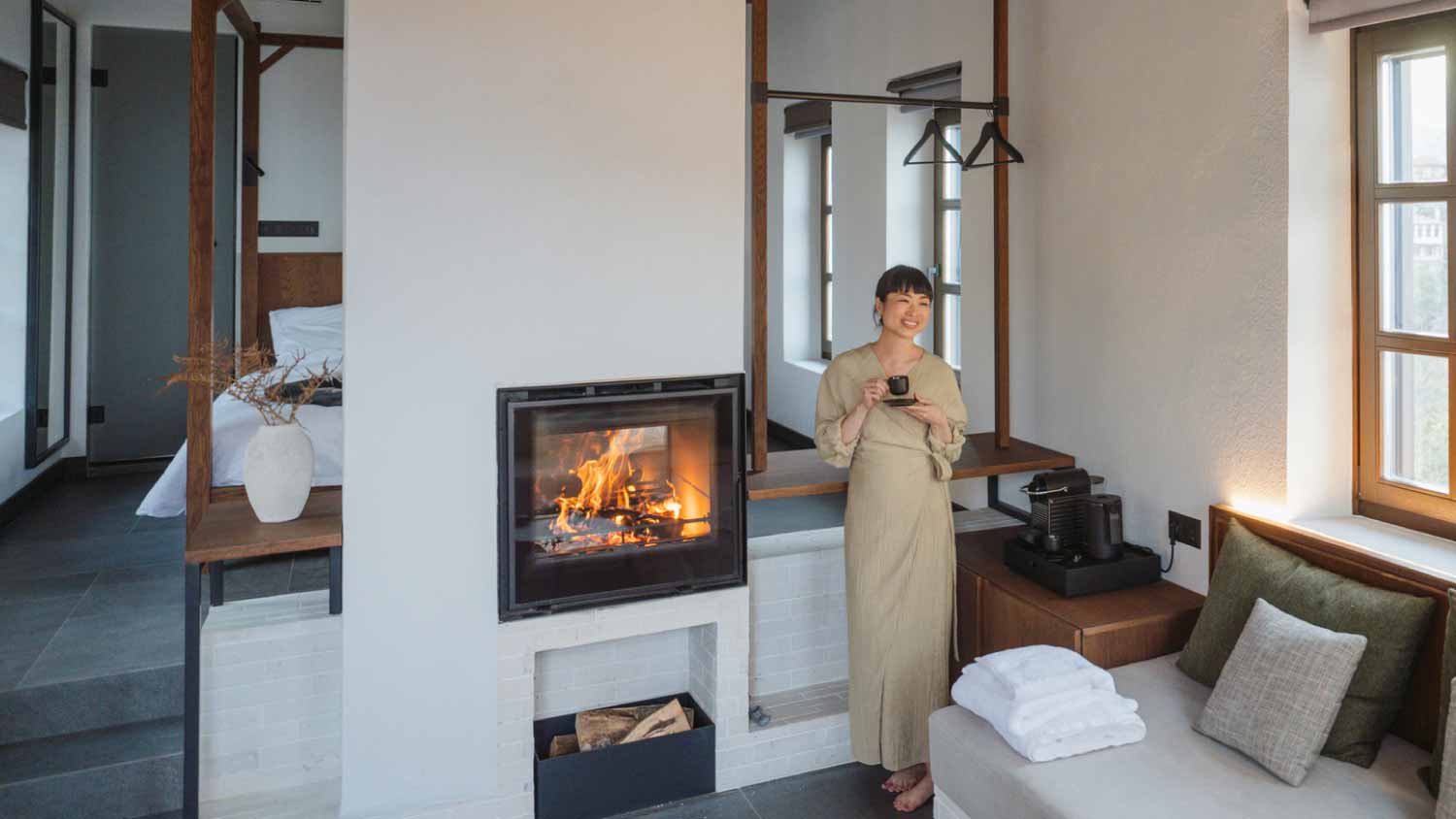

When you envision a new fireplace in your space, you may picture a traditional version, with a big, open hearth surrounded by brick or stone. As it turns out, there are actually several options to choose from for a wood-burning heating unit.
There are seven main types of wood-burning fireplaces: open hearth, closed hearth, fireplace inserts, double-sided fireplaces, wood-burning stoves, EPA-certified options, and masonry heaters. But which one is right for heating your home? Compare the most common types of wood-burning fireplaces below.
| Type of Wood-Burning Fireplace | Efficiency |
|---|---|
| Open Hearth | 5%–15% |
| Closed Hearth | 70%–80% |
| Fireplace Insert | 60%–85% |
| Double-Sided Fireplace | 50%–80% |
| Wood-Burning Stove | 70%–85% |
| EPA-Certified | 75%+ |
| Masonry Heater | 65%–90% |
1. Open Hearth
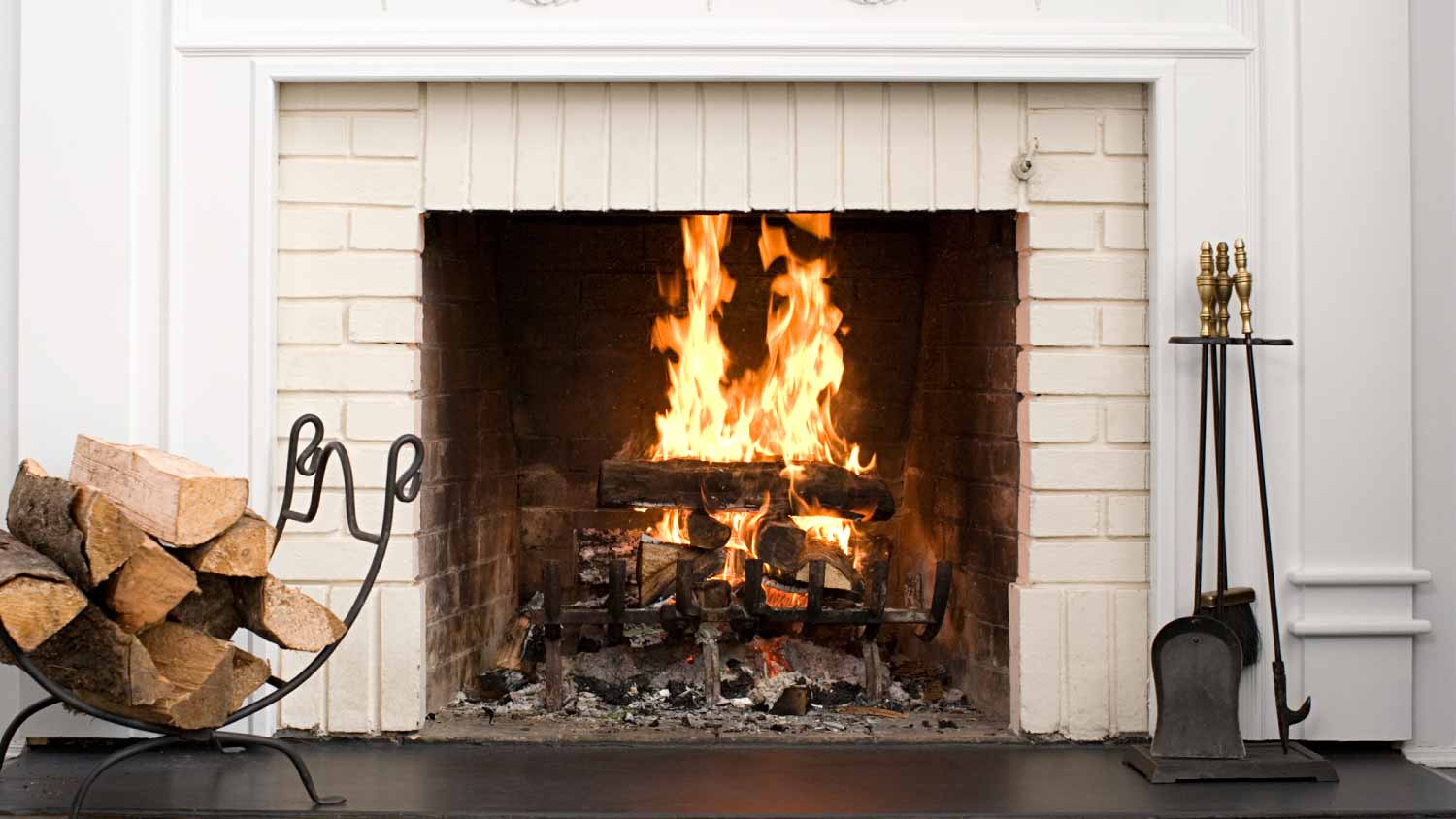
An open hearth fireplace has the front open, with the fire burning at the bottom of the fireplace interior. This type of wood-burning fireplace usually has firebrick, stone, or another durable material lining the inside of the fireplace. But because the front of the fireplace is open, this heating option has a lower efficiency rating and may be 15% or less efficient.
Fireplace maintenance is particularly important for open hearth fireplaces because you need to keep the lining in excellent condition to avoid costly repairs. You’ll need to clean out the ash and soot at least a few times per week when using it regularly, and a pro needs to inspect and clean the chimney at least once per year. You may also want to invest in a mesh screen or other protective covering, especially if you have little ones or pets in the house.
| Pros | Cons |
|---|---|
| Cozy ambiance | Less safe for kids and pets |
| Boosts home value | Lowest efficiency |
| Long life span | High maintenance |
Best for: Homes without children or pets
2. Closed Hearth
In contrast, a closed hearth fireplace has an added glass screen, so you can still enjoy the look of the fire but with an additional safety layer. Because of the enclosed design, a closed hearth can operate more efficiently—up to 70% to 80%. Closed hearth fireplaces can still offer the rustic, traditional look of a classic, open hearth fireplace.
Because closed hearth fireplaces require special skills and tools to construct the fireplace and chimney, the cost for installing a fireplace can be high. A wood-burning fireplace can cost up to $30,000 if you are building a brand-new one, which will require foundational construction work.
| Pros | Cons |
|---|---|
| Safer than an open hearth | Frequent glass cleaning |
| Variety of styles | High maintenance |
| Higher efficiency | High installation cost |
Best for: Homes with kids and pets
3. Wood-Burning Fireplace Inserts
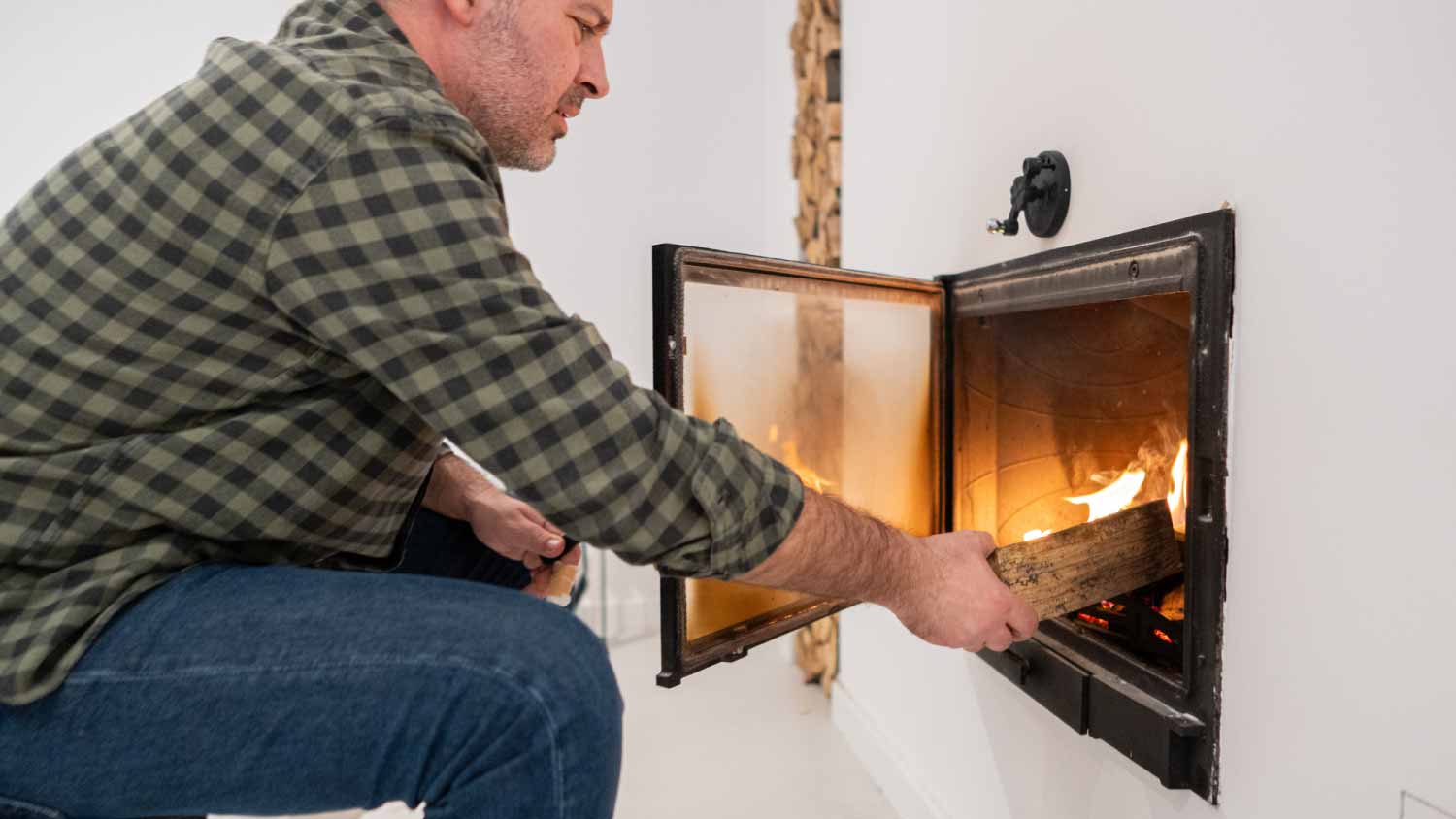
You may have an opening for a fireplace, but it’s long been out of operation. Now, you’re considering different types of wood-burning fireplaces to replace the old one. Instead of building a new fireplace from scratch, you can hire a local fireplace installer to add a fireplace insert. A wood-burning fireplace insert is an enclosed firebox that can fit right into the existing fireplace opening. It can make use of the existing chimney for ventilation, but you’ll need a pro to help ensure the fireplace insert is properly installed and vented.
Like a closed hearth fireplace, fireplace inserts offer higher efficiencies of up to 85% because of their enclosed design. However, you’ll need to clean out both the interior and glass door. Keep in mind that you’ll need to buy or chop smaller logs to fit into the smaller firebox.
| Pros | Cons |
|---|---|
| Utilizes existing fireplace | Smaller firebox |
| Lower installation cost | Frequent glass cleaning |
| Safer | Requires existing fireplace |
Best for: Homes with existing fireplaces
4. Double-Sided Fireplaces
If you want your home to feel more like a luxurious ski resort, consider a double-sided fireplace. This fireplace can heat two rooms at once or even an interior room and an outdoor space at the same time. To improve heating efficiency and offer improved safety, double-sided fireplaces have glass enclosures on both sides.
Because the fireplace will service two rooms or an indoor and outdoor space, you need to use dense insulating materials. This means you will likely spend a much higher amount on installation costs. Also, you may burn through fuel faster to heat two spaces per burn, so be prepared to chop or buy more wood after installing a double-sided fireplace.
| Pros | Cons |
|---|---|
| Luxury look | High installation cost |
| Heats two spaces at once | More fuel needs |
| Safer | High maintenance |
Best for: Heating multiple spaces
5. Wood-Burning Stove
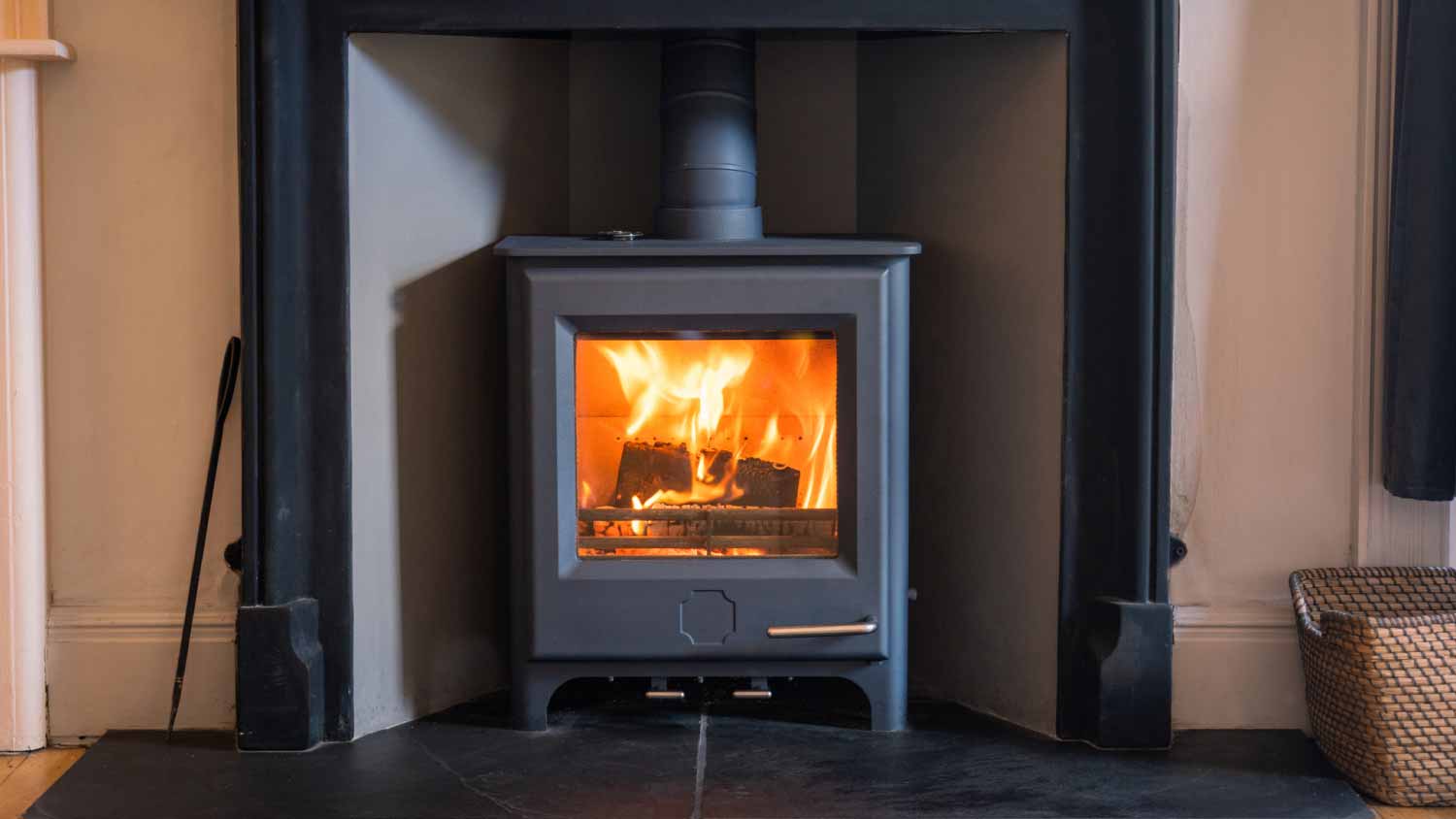
Although it’s not technically a fireplace, a wood-burning stove operates like a self-contained fireplace with the benefit of being easier to install, even in a home you’re retrofitting. These stoves are made from steel or cast iron, and they contain the fire inside an enclosed firebox. Catalytic wood-burning stoves can be an extremely efficient heating option with up to 85% efficiency.
While wood-burning stoves are easy to install, you should still hire a pro for the job. These stoves require proper ventilation for efficient burning and to avoid filling your home with smoke, soot, and harmful combustion gases. Like fireplaces, they require a lot of maintenance to keep the wood stove parts in good shape. Some chores you’ll need to add to your list include cleaning the firebox after each use and having annual chimney inspections and cleanings.
| Pros | Cons |
|---|---|
| Higher efficiency | Requires shorter wood logs |
| Fewer emissions | Takes up floor space |
| Lower maintenance | High maintenance |
Best for: Efficient heating
6. EPA-Certified Wood-Burning Fireplaces
Some types of wood-burning fireplaces and wood stoves may have features that allow them to burn more efficiently and reduce air pollution. For the most efficient models, they can earn a stamp of approval from the U.S. Environmental Protection Agency (EPA). The EPA offers certifications for wood-burning fireplaces, fireplace retrofits, fireplace inserts, and wood stoves. These certified products can burn no more than 4.5 grams of smoke per hour. By comparison, older wood-burning fireplaces may produce up to 30 grams of smoke per hour.
Not only does the EPA certification mean the unit is more efficient at converting the burning wood into heat, but EPA-certified products can also qualify for the Department of Energy’s tax credits for energy-efficient home upgrades.
| Pros | Cons |
|---|---|
| More efficient | Requires extra buyers’ research |
| Lower heat costs | May have a high up-front cost |
| May be eligible for tax credits | Takes time to receive credits |
Best for: Budget- and eco-conscious homeowners
7. Masonry Heater

A masonry heater is an appliance that is enclosed in bricks or stones to maximize heating capacity, and it has up to 90% efficiency. While you’ll have a much more limited view of the flames, the radiant heat from a masonry heater can keep your room toasty for 12 to 24 hours. The excellent heating capacity also means a masonry heater can warm larger rooms or even your entire home of up to 2,500 square feet.
Installing a masonry heater can be difficult because it can weigh around 1,760 pounds. Because it requires high-skilled pros to make and install, this type of wood-burning fireplace can cost $8,000 to $30,000. These heating units are also pretty large, so you may need to say goodbye to your favorite reading nook to make space for a masonry heater.
| Pros | Cons |
|---|---|
| Around 90% efficiency | High installation cost |
| Heats larger rooms | Takes up a lot of space |
| Heats for 24 hours | Limited view of the fire |
Best for: Heating large spaces








